-
1 of 253523 objects
Albert Victor, Duke of Clarence and Prince George 1878
Bronze | 50.5 x 27.0 cm (whole object) | RCIN 2165
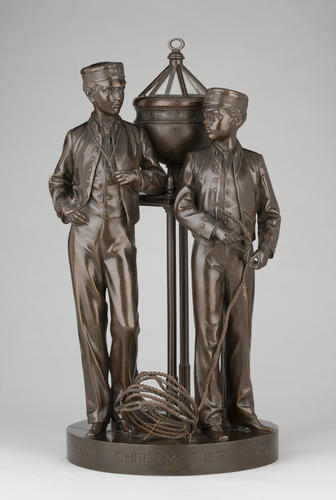
Prince Victor of Hohenlohe-Langenburg, Count Gleichen (1833-91)
Albert Victor, Duke of Clarence and Prince George 1878
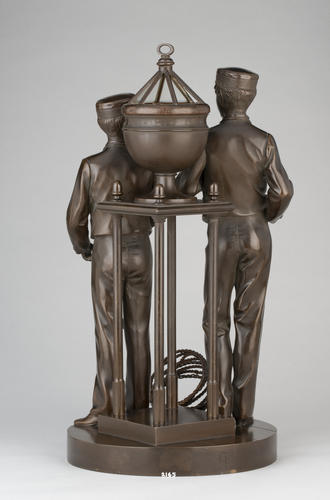
Prince Victor of Hohenlohe-Langenburg, Count Gleichen (1833-91)
Albert Victor, Duke of Clarence and Prince George 1878
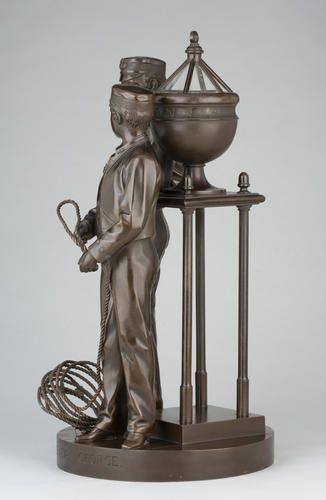
Prince Victor of Hohenlohe-Langenburg, Count Gleichen (1833-91)
Albert Victor, Duke of Clarence and Prince George 1878
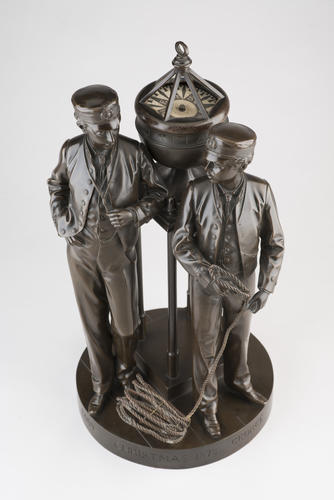
Prince Victor of Hohenlohe-Langenburg, Count Gleichen (1833-91)
Albert Victor, Duke of Clarence and Prince George 1878
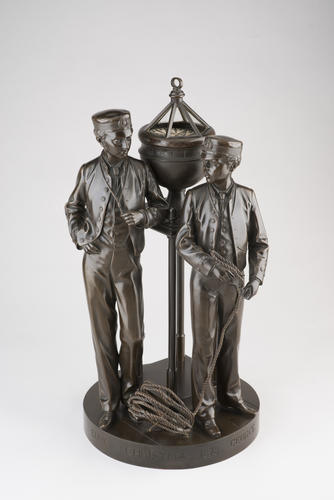
Prince Victor of Hohenlohe-Langenburg, Count Gleichen (1833-91)
Albert Victor, Duke of Clarence and Prince George 1878
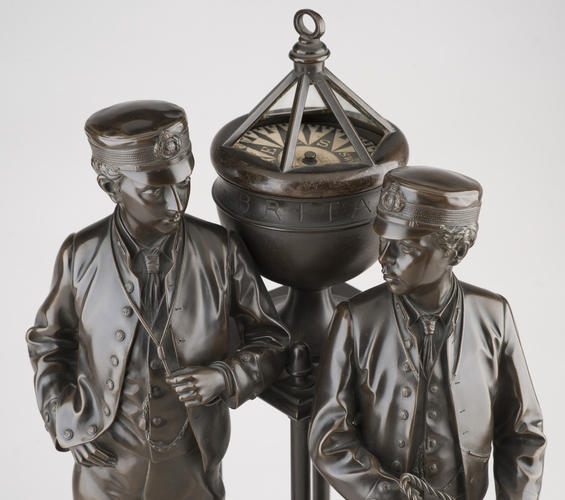
Prince Victor of Hohenlohe-Langenburg, Count Gleichen (1833-91)
Albert Victor, Duke of Clarence and Prince George 1878






-
This bronze group sculpture of Prince Albert Victor, Duke of Clarence and Prince George when boys, was presented to Queen Victoria – the princes’ grandmother - as a Christmas present in 1878 by her son Edward, Prince of Wales. Edward VII’s sons are depicted dressed as cadets leaning against the binnacle supporting the compass of the training ship Britannia, the Royal Navy’s training ship, of which the two brothers became naval cadets (apprentice officers) in 1877. The name of the ship is inscribed in capital letters around the border of the compass. Prince George is shown holding in his right hand a marlinspike – a tool used to untie knots – and the end of a rope in his left. Ropework was one of main seamanship skills that naval cadets were taught during their training and on which they were tested. Intended to display the seamanship of the young princes, this realistic sculpture captures the close relationship that existed between the two brothers. Prince George – later George V - went on to pursue a successful career in the navy which he gave up upon his brother’s death in 1892, when he was created Duke of York and became his father’s successor to the throne. The artist’s connection to the subject of the sculpture is also interesting. Count Gleichen had been an officer of the British Navy himself until he retired from it in 1866. Upon his retirement he decided to pursue a career as a sculptor. Besides his advantageous royal connections – his mother was Queen Victoria’s half-sister and having gone bankrupt, he was given a lease for a studio and apartments at St James’s Palace – he became a highly successful and respected sculptor enjoying a strong patronage outside royal circles. Queen Victoria kept the sculpture at Osborne House, the summer residence she had built in the Isle of Wight. After her death it was sent to Buckingham Palace in 1903. In 1983 it was sent to the Palace of Holyroodhouse in Edinburgh. Another cast of the sculpture (RCIN 7960) is in Sandringham. RCIN 7960 at Sandringham RCIN 2165 at Holyroodhouse
Provenance
Given to Queen Victoria by the Prince of Wales as a Christmas present in 1878. (cf Osb, Inv, Vol I p 66)
-
Creator(s)
Acquirer(s)
-
Medium and techniques
Bronze
Measurements
50.5 x 27.0 cm (whole object)